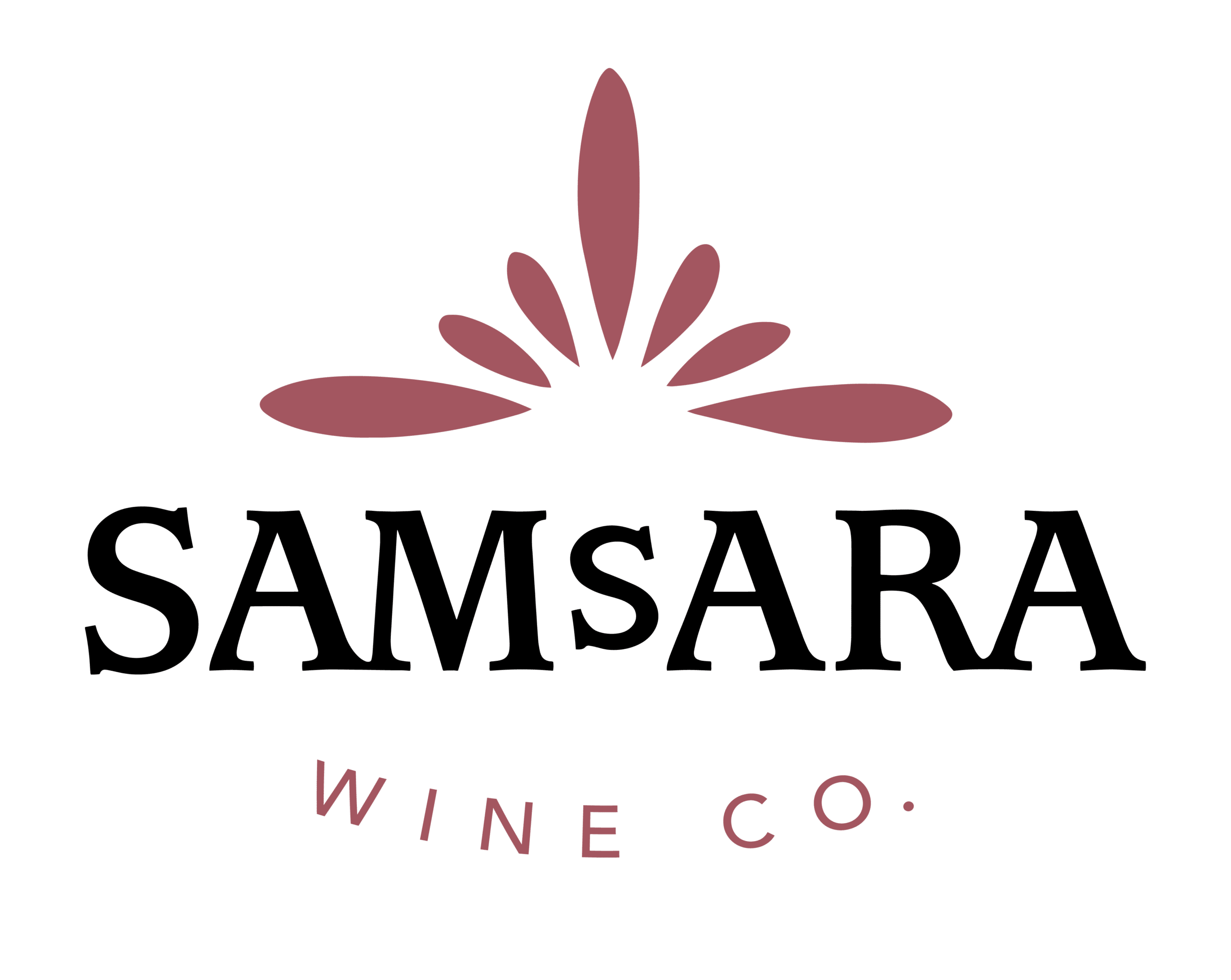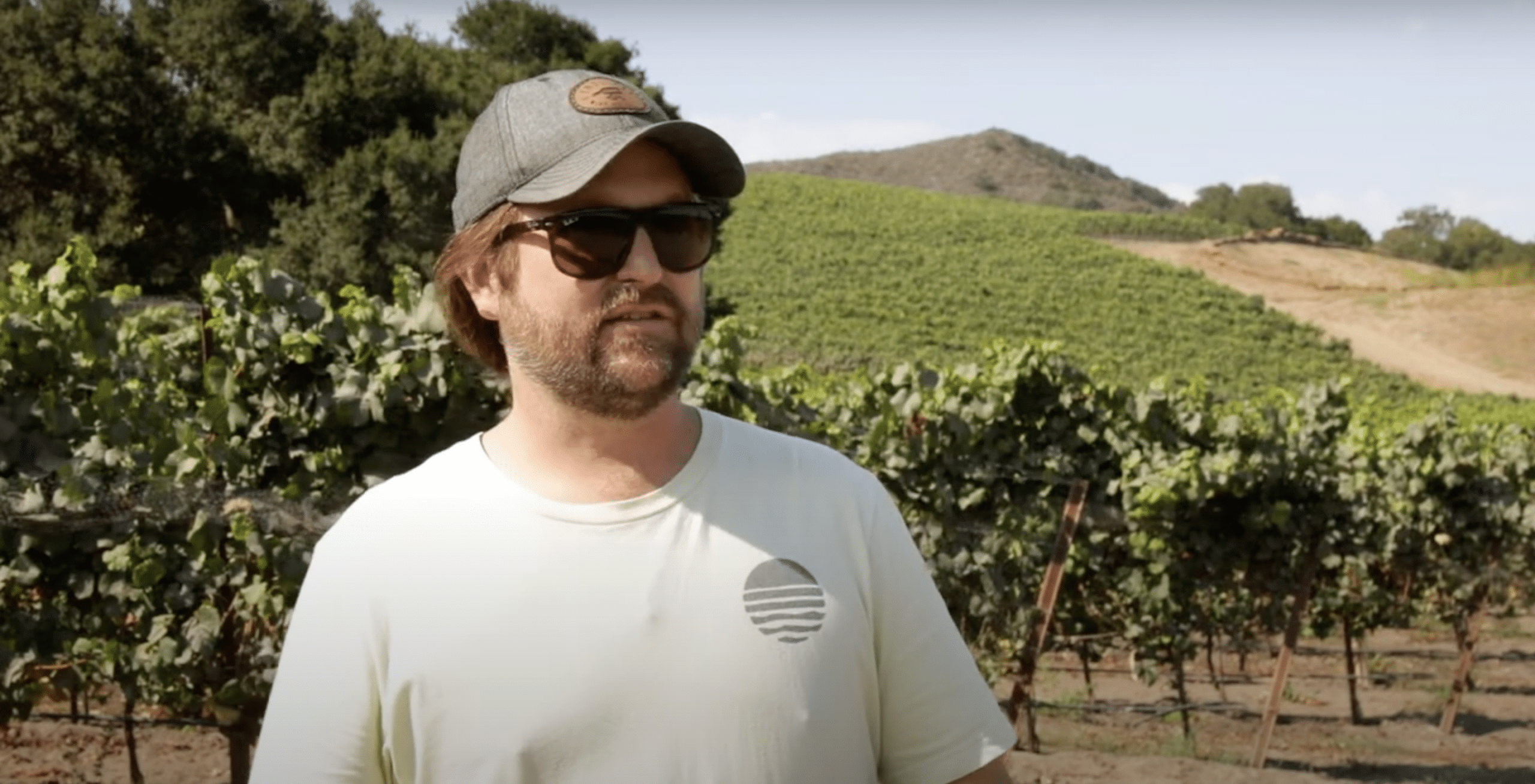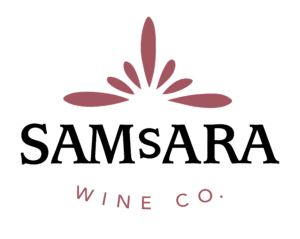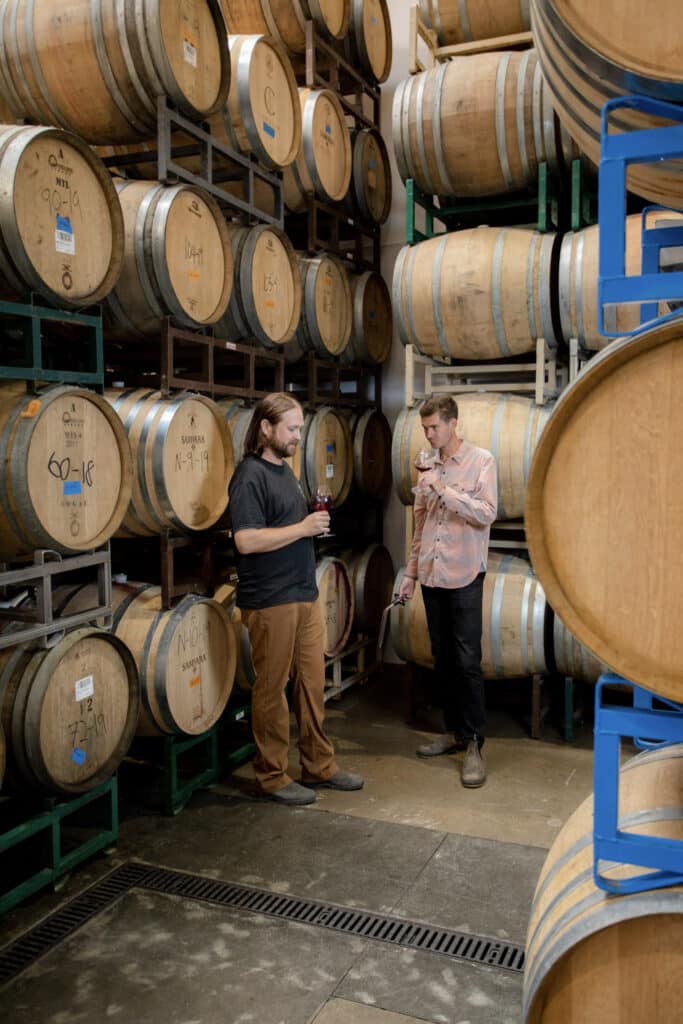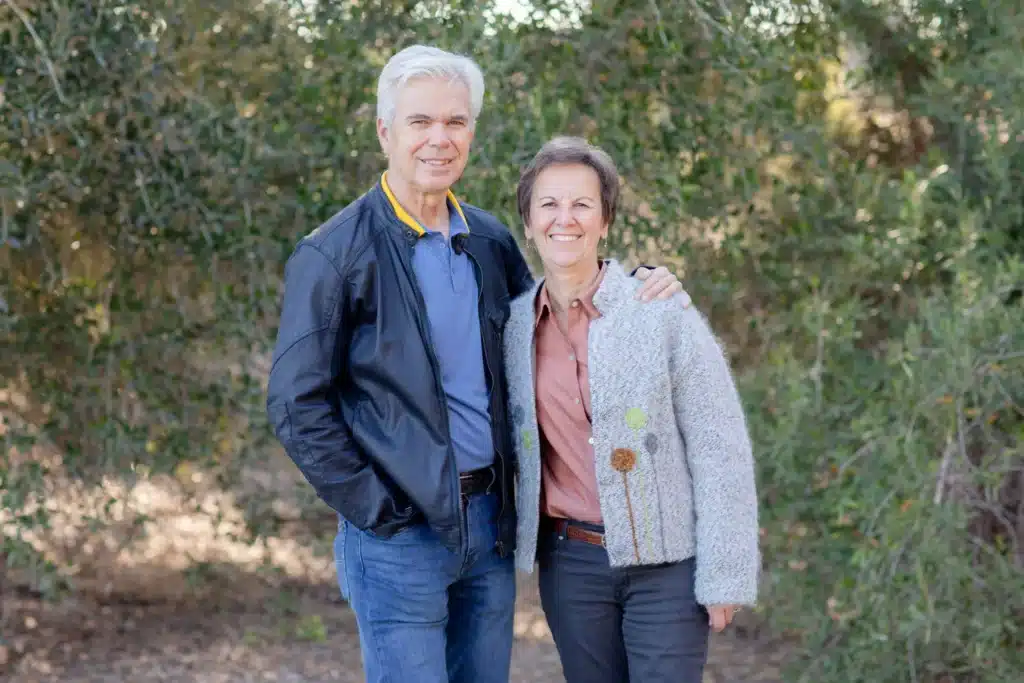AVAs OF SANTA BARBARA WINE COUNTRY
Santa Barbara County is home to 283 wineries and 7 officially recognized American Viticultural Areas or AVAs: They are Santa Maria Valley AVA, Santa Ynez Valley AVA, Sta. Rita Hills AVA, Ballard Canyon AVA, Los Olivos District AVA, Happy Canyon AVA, and Alisos Canyon AVA.
Santa Maria Valley AVA
Santa Barbara’s northernmost viticultural area, Santa Maria Valley, is located roughly 15 miles inland from the Pacific Ocean. It was the first AVA in the county, receiving its official designation in 1981. It is widely recognized for producing some of Santa Barbara’s finest Pinot Noir and Chardonnay wines. The region has approximately 7,500 acres under vine and boasts around a dozen wineries and tasting rooms.
The east to west orientation of the Santa Maria Valley allows cool winds and fog to flow freely from the Pacific Ocean, with much of the coolness settling into the lower-lying basins. This cooling effect is significant enough to influence the growing season in this area, lengthening it and contributing to the sugar/acid balance of the grapes. Santa Maria’s grape growing season is among the longest in the world.
The mild temperatures and extended growing season are not the only features of the Santa Maria Valley’s terroir – the soil the grapes are grown in is relatively free draining and loamy, which prevents the vines from becoming waterlogged. The loams vary from area to area with limestone being present in some of the more “exceptional” vineyard plots.
The combination of climate and soil present in the Santa Maria Valley AVA consistently produces wines that display clean and concentrated fruit flavors balanced by a bright, refreshing acidity.
The dominant variety of grapes in the Santa Maria Valley is undoubtedly Pinot Noir. It grows exceptionally well in the AVA’s cooler microclimates. Chardonnay also grows incredibly well, with ⅓ of Santa Maria Valley’s wine output devoted to it. At the eastern end of the valley, at higher elevations further from the ocean, warmer-climate grapes including Viognier and Syrah, with Grenache and even Roussanne and Marsanne being grown as well – albeit in smaller quantities.
Colson Canyon Vineyard is located just northwest of the Santa Maria AVA high in the mountains of Tepesquet Canyon. It is planted to 7.97 acres of vines with elevations reaching 1299 feet. SAMsARA has been sourcing grapes from this vineyard since 2017. The warm days and cool nights of Colson Canyon generally produce concentrated, fruit-forward wines rich in notes of blackberries, jammy black fruits, graphite and violets. Vintages can also show hints of plums that bring in an extra layer of complexity. Vineyard Region: Santa Maria Valley, Santa Barbara County.
Santa Ynez Valley AVA
The Santa Ynez Valley AVA lies southeast of the Santa Maria Valley AVA. The windy Santa Ynez Valley covers over 76,000 acres of land and contains a variety of microclimates. Santa Ynez is home to the most wineries in the county and holds within it four district AVAs: Sta. Rita Hills, Happy Canyon, Ballard Canyon and the Los Olivos District AVAs.
The valley is formed by the San Rafael mountains in the north and the Santa Ynez mountains in the south, which offer a wide range of growing temperatures for the many different types of grapes that are grown here. The majority of the vineyards here are planted on hillsides which allows the grapes to see optimal levels of sunlight and develop the favorable levels of sugar and ripeness.
With four recognized AVAs present in the Santa Ynez Valley, there is no shortage of exceptional wines being made here from a variety of different grapes. Sta. Rita Hills is known for top quality Pinot Noir and Chardonnay, Happy Canyon is host to some of the best Cabernet Sauvignon in the region, while the moderately warmer climates of Los Olivos and Ballard Canyon can sustain a wider range of grapes including Bordeaux and Rhone varietals.
The east to west orientation of the Santa Maria Valley allows cool winds and fog to flow freely from the Pacific Ocean, with much of the coolness settling into the lower-lying basins. This cooling effect is significant enough to influence the growing season in this area, lengthening it and contributing to the sugar/acid balance of the grapes. Santa Maria’s grape growing season is among the longest in the world.
The east to west orientation of the Santa Maria Valley allows cool winds and fog to flow freely from the Pacific Ocean, with much of the coolness settling into the lower-lying basins. This cooling effect is significant enough to influence the growing season in this area, lengthening it and contributing to the sugar/acid balance of the grapes. Santa Maria’s grape growing season is among the longest in the world.
Sta. Rita Hills AVA
Encompassing a sprawling area over 30,000 acres but with just a fraction of that being dedicated to vineyards (roughly 2,000 acres), Sta. Rita Hills is the premium cool-climate AVA nestled within the larger Santa Ynez Valley AVA.
Officially designated an AVA in 2001, it did not receive its name until 2006 after a long legal battle with a similarly named Chilean wine growing region. In 2006, the legal negotiations ended and both parties agreed that the abbreviated written name “Sta. Rita Hills” was enough of a distinction to differentiate our region from theirs.
Located 12 miles from the Pacific, between the towns of Lompoc and Buellton, this region sees cool breezes and warm afternoon sun which gives the grapes ample time to develop intense flavors. With a mix of minerals, limestone, diatomaceous earth and marine sediment, the soil composition contributes to the terroir forwardness of wines made from grapes grown in this esteemed AVA.
The valley is formed by the San Rafael mountains in the north and the Santa Ynez mountains in the south, which offer a wide range of growing temperatures for the many different types of grapes that are grown here. The majority of the vineyards here are planted on hillsides which allows the grapes to see optimal levels of sunlight and develop the favorable levels of sugar and ripeness.
With four recognized AVAs present in the Santa Ynez Valley, there is no shortage of exceptional wines being made here from a variety of different grapes. Sta. Rita Hills is known for top quality Pinot Noir and Chardonnay, Happy Canyon is host to some of the best Cabernet Sauvignon in the region, while the moderately warmer climates of Los Olivos and Ballard Canyon can sustain a wider range of grapes including Bordeaux and Rhone varietals.
The east to west orientation of the Santa Maria Valley allows cool winds and fog to flow freely from the Pacific Ocean, with much of the coolness settling into the lower-lying basins. This cooling effect is significant enough to influence the growing season in this area, lengthening it and contributing to the sugar/acid balance of the grapes. Santa Maria’s grape growing season is among the longest in the world.
The east to west orientation of the Santa Maria Valley allows cool winds and fog to flow freely from the Pacific Ocean, with much of the coolness settling into the lower-lying basins. This cooling effect is significant enough to influence the growing season in this area, lengthening it and contributing to the sugar/acid balance of the grapes. Santa Maria’s grape growing season is among the longest in the world.
All of SAMsARA’s Pinot Noir & Chardonnay vines are planted within the Sta. Rita Hills AVA.
Las Hermanas Vineyard is one of SAMsARA’s star Pinot Noir vineyards, located on the very west end of the ‘Hwy 246 corridor’ in Sta. Rita Hills. An extremely cool site, SAMsARA’s hillside Pinot Noir block is planted north-facing, further slowing the pace of ripening and allowing the fruit to be picked at optimal balance and ripeness. Limestone and mineral rich soils make this single vineyard bottling an elegant, balanced, and complex wine.
Rancho la Vina Vineyard is one of SAMsARA’s best known and highest rated single vineyard Pinot Noir bottlings. The vineyard is planted on west Santa Rosa Rd in the south-west corner of the AVA. This cool climate site produces rich fruit with dense flavors, and this combination of depth and concentration makes it particularly well suited for whole-cluster fermentation, giving the wine extra complexity and longevity.
Kessler-Haak Vineyard is a standout in SAMsARA’s line-up of Sta. Rita Hills single vineyard Pinot Noirs. Located on the very west end of the Hwy 246 in Sta. Rita Hills, and while the cold likes to settle in this cool part of Sta. Rita, SAMsARA’s section of Pommard clone Pinot Noir is planted on a west facing wind-exposed hillside. This section is low-yielding, and is always our latest ripening Pinot Noir, producing dark, complete, and complex fruit.
Cargasacchi Vineyard is a distinctive vineyard in the ‘Sweeny Canyon’ area of Sta. Rita Hills, located between the ocean-influence facilitating ranges which define the ‘Hwy 246’ and ‘Santa Rosa Rd’ corridors. Sandy soils rich in Diatomaceous Earth, limestone, and minerals add elegance and complexity to the low-yielding Pinot Noir grown here.
John Sebastiano Vineyard is a picturesque site, planted to steep hillsides and rolling hills on the eastern end of Sta. Rita Hills. Both Chardonnay and Pinot Noir thrive in this sandy, windy site, and the cool-climate Syrah we produce here just barely achieves ripeness and is always the final pick of the vintage. The elevation and exposed hillsides of the vineyard lead to low-yields and fruit with balance, depth, and complexity.
Bentrock Vineyard is part of the ‘Salsipuedes Ranch’, the westernmost property on Santa Rosa Rd on the coastal boundaries of the Sta. Rita Hills AVA. Organically farmed and planted just east to its ‘sister site’ Radian Vineayrd. SAMsARA’s ‘Bentrock Vineyard’ Chardonnay ‘walks the line’ between acidity, texture, and depth of flavor. The extreme cool site is optimal for preserving acidity, limiting yield, and concentrating flavors. The diatomaceous earth and mineral rich soils add a complex minerality showcasing the specialness of the Sta. Rita Hills terroir.
Radian Vineyard is part of the ‘Sasipuedes’ Ranch, and is located just west to its ‘sister site’ Bentrock Vineyard. Organically farmed and planted onto super steep hillsides, SAMsARA’s Pinot Noir block is completely exposed to the extreme wind, fog, and cold ocean air. As a result, the Pinot Noir grown here is extremely low yielding, with tiny clusters, super small berries, with tremendous flavor intensity.
La Encantada Vineyard is an iconic Sta. Rita Hills vineyard, producing one of SAMsARA’s most distinctive single vineyard Pinot Noirs. Old vines, sandy soils, and cool, windy conditions result in ultra-low yields with dark, bright, concentrated fruit. The depth and density provided by this fruit allow for great ‘whole-cluster’ integration, allowing us to make a wine of greater complexity with structure and balance to ensure longevity and enjoyment over many years.
Rio Vista Vineyard is a well-known vineyard planted along Santa Rosa Rd in the Sta. Rita Hills. Our clone 777 Pinot Noir grown here is used for both a SAMsARA single vineyard bottling and as a major component in our Sta. Rita Hills bottling. Planted on a north facing hillside, our block at Rio Vista is the very last block in the vineyard to ripen, making this site a ‘late ripener’ with extra hang time.
Melville Vineyard is located in the heart of the Sta. Rita Hills AVA. An iconic site, and a great example of how our region’s climate and terroir drive Pinot Noir and Syrah to both reach their full potential. Sandy and mineral rich soils contribute a sense of place and minerality to the fruit grown here, and the extra cool location within Sta. Rita Hills ensures long hangtime, high acid, and fully developed flavors.
Turner Vineyard produces fruit that truly speaks to Sta. Rita Hills terroir and ‘sense of place.’ Planted along the Hwy 246 and located adjacent to Melville Vineyard, the Turner Vineyard wines demonstrate consistent aromatics, texture, and style each vintage that are unmistakably ‘Turner.’ The savory umami and cracked pepper spice reinforce why we’re committed to cool climate Pinot Noir and Syrah.
Zotovich Vineyard has been a star vineyard for SAMsARA for many vintages. Planted in the heart of Sta. Rita Hills along the wind-swept Hwy 246 corrdidor. The Chardonnay and Syrah grown here really allow the sandy, Diatemaceous Earth and limestone rich soils to shine through, providing minerality and saline texture to the wine produced here. Fruit grown at this site allows us to produce bright, acid driven, textured, terroir driven wines.
Spear Vineyard is located along the Hwy 246 in the heart of Sta. Rita Hills. Spear Vineyard is organically farmed (certified) and has 34 acres under vine with some of the highest elevations in the appellation. SAMsARA’s Chardonnay from this cool site is acid driven with bright fruit flavors, perfect for our style of bright and balanced Chardonnay.
Donnachadh Vineyard is located along Santa Rosa Rd. in Sta. Rita Hills, the organically farmed Donnachadh Vineyard is planted to around 40 acres. SAMsARA’s hillside block of Chardonnay is exposed to the cool ocean winds and benefits from the rocky and marine shale rich soils. This low-yielding site always produces wines that are rich, textural, and complex.
Happy Canyon AVA
Receiving its official designation as an AVA in 2009, Happy Canyon is also located within the Santa Ynez Valley AVA and is one of the youngest AVAs in the area. Vines were first planted here in the early 90s, with the area producing its first vintage in 2001. After receiving its AVA the appellation has grown leaps and bounds to approximately 24,000 acres of which around only 500 is currently dedicated to grape growing.
Its position, farther inland on the eastern portion of the Santa Ynez Valley, still affords it some of the cooling temps from the Pacific Ocean but also leads to warmer days than its western neighbors. In fact, Happy Canyon possesses the warmest microclimate within the Santa Ynez Valley, with temps reaching up to 90°F after the morning fog has burned off in the summer months. The soil here is nutrient-poor but rich in minerals with areas varying from sandy, clay loams to serpentine and cherts cobbles.
The soil and climate within Happy Canyon make it incredibly suited for Bordeaux variety grapes like Cabernet Sauvignon, Sauvignon Blanc, Merlot, Petit Verdot, and Malbec. Rhone Valley grape varieties are also grown here with Syrah at the forefront. Wines coming out of Happy Canyon can be lushly textured, fruit-forward wines. With six vineyards and two active wineries to date, this new AVA is looking to boom with talented winemakers who see its potential.
Ballard Canyon AVA
Ballard Canyon is another AVA situated within the larger Santa Ynez Valley AVA. Officially recognized as an AVA in 2013, Ballard Canyon is protected from much of the ocean-generated winds by the north-south orientation of the hills that make up its western border. It lies both in geography and climate between the warmer Happy Canyon AVA and the cooler Sta. Rita Hills AVA. Comprising around 7,800 acres of land Ballard Canyon itself is a long, narrow canyon that runs north to south and is bordered by many smaller canyons, set against the dry rugged hills of the area.
Grapes grown in the south of the canyon are exposed to morning fog that sweeps in from the Pacific Ocean, with longer cool exposure than vines planted at the higher elevations in the northern part of the canyon. Vines grown at higher elevations require deep root systems due to the arid environment – improving the overall strength and hardiness of the vines. Soil here, while dry, is made up of sand, clay loam, and in certain areas, limestone, all of which possess good draining capacities. High levels of calcium are also found in the soil of Ballard Canyon which contributes to the development of concentrated tannins, acids and sugars in the grapes, leading to well-balanced, rich, fresh flavored wines.
Red Rhone varietals are popular in Ballard Canyon due to the weather and soil characteristics described above, with Syrah and Grenache in the forefront, with Syrah making up approximately half of Ballard’s vineyards.
Larner Vineyard in Ballard Canyon is one of SAMsARA’s favorite sites for sourcing Grenache grapes due to the high elevation and marina sand and chalk/limestone soil composition that contributes to a single varietal wine with light, nearly translucent, color and smooth saline finish.
Jorian Hill Vineyard, contributes to SAMsARA’s Syrah program, while also serving as a source for Grenache, Mourvedre, and Viognier grapes. Jorian Hill Vineyard is on the very western edge of Ballard Canyon, making it one of the coolest sites in this AVA. . You can see the edge of SRH from the upper elevations of the vineyard. As its name may imply, the property is super steep where the Syrah is planted (similar to Hermitage) and has been organically farmed by the same farmer for decades.
Los Olivos District AVA
The Los Olivos District AVA is the newest AVA in Santa Barbara County. Established in early 2016, Los Olivos District is another sub-region of the larger Santa Ynez Valley AVA. It borders the neighboring AVAs of Ballard Canyon to the west and Happy Canyon to the east.
Los Olivos sits on a large terrace above the Santa Ynez River. The area sees similar amounts of rainfall, fog, and sun as its neighbors to the east and west but with a thinner marine fog layer due to its more inland location. This low level of fog burns off quickly in the morning leading to warmer daytime temperatures and cool nighttime ones that benefit ripening, acidity maintenance and overall sugar accumulation. Due to its relatively flat geography and moderately sandy and clay loam soils Los Olivos District AVA is well suited for tractors and machine tilling operations that would be impossible on the rugged, steep terrain of the neighboring AVAs.
Due to its unique geography, and mineral-rich soil Los Olivos District AVA lies in the middle of climates for the area as well as wine styles. The length of the growing season is on par with Ballard and Happy Canyon but the wines produced can be more varied. Popular varieties of grapes planted here are typical of Bordeaux – Cabernet Sauvignon, Sauvignon Blanc, Semillon, and Merlot, but it is also suited for Syrah.
Alisos Canyon
Alisos Canyon has been renowned for its high-quality fruit for several years, and locals sought to give this informal recognition a more formal status by applying for their own AVA. The region is located in Santa Barbara County and covers 5,775 acres south of the Santa Maria Valley AVA near the town of Los Alamos.
Much like the town of Santa Ynez itself, Los Alamos offers the visitor a step back in history to a time when stagecoaches and railroads reigned supreme. Alisos Canyon is cooler than Santa Ynez, but warmer than Santa Maria Valley, which means it has a wide diversity of wine varieties. Although the region is famous for its premium stone fruit driven Chardonnay, other favorites include Grenache-Syrah blends and Pinot Noir.
